
Guy Doré - Director
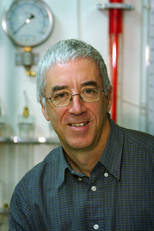
The program is under the direction of Guy Doré, a professor in the faculty of Science and Engineering at Laval University since 1997. He has a strong background in transportation infrastructure engineering in seasonal frost and permafrost contexts. Amongst other activities, Guy Doré worked on the design and construction of transportation infrastructures in Nunavik. Since the early 2000s, he has been developing an important research program dealing with the performance and protection of roads, railways and airfields built on thaw-sensitive permafrost. Amongst several other publications on the topic, he co-authored the books “Cold regions pavement engineering” (McGraw-Hill / ASCE press) and “Guidelines for development and management of transportation infrastructure in permafrost regions”, that have been published by The Transportation Association of Canada.
Daniel Fortier - Collaborator
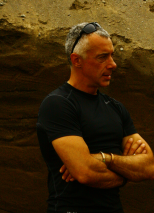
Daniel Fortier is professor of geomorphology at Université de Montréal, associate research professor at the Institute of Northern Engineering (University of Alaska Fairbanks), and director of the Cold Regions Geomorphology and Geotechnics Laboratory at Université de Montréal. Since the early 2000s, his research has been focusing on the geodynamics of permafrost regions. In Yukon and Nunavik, he manages research projects dealing with the impact of permafrost degradation on infrastructure stability in a global warming context. He has been involved in the choice of the site and the permafrost characterization, as well as in the design, the construction and the monitoring of the experimental road section at Beaver Creek (Yukon), to test mitigation techniques of permafrost degradation.
Louis Gosselin - Collaborator

Louis Gosselin is professor of mechanical engineering at Laval University. He possesses recognized expertise in the modelling of heat transfer mechanisms and thermal systems optimization. His recent interests include, among other topics, work related to solid-liquid phase change problems, heat transfer and fluid flow in porous media, permafrost, and geothermal energy.
Chantal Lemieux - Research Coordinator

Being coordinator of the research program, she ensures the communication with the associated partners involved, she takes part in the technical and financial management of the program and she assists with the supervision of the students involved. Furthermore, she helps to plan the research work and the development of experimental programs as well as data collection programs, that take place both in the laboratory and on the terrain.
Loriane Perier - Research Coordinator (former)

After having completed a Master’s degree in an associated Arquluk program, Loriane is now a research coordinator and is planning activities by participating in the coordination of research, supervision of students and writing of technical report
Students
Julie Malenfant-Lepage - PhD student

Julie completed her Master’s degree from the Department of Civil and Water Engineering at Laval University in Quebec. Her research aimed to experiment with techniques that mitigate permafrost thaw of the Alaska Highway in Yukon. Julie obtained a Bachelor’s degree in Geological Engineering at Laval University. Her Ph.D. project, undertaken within the context of the Arquluk research program, focuses more precisely on surface and groundwater management for transportation infrastructures in permafrost environments.
Heather Brooks - PhD Student

Heather is a lifelong Alaskan. She completed her Master’s degree in 2008 at Montana State University in Bozeman, Montana, studying “Driven Pile Bridge Foundations in Intermediate Geomaterials.” She worked as an arctic and foundation engineer in Alaska until 2013. Her Ph.D. project, undertaken with the Arquluk research program, focuses on developping a framework for the management of linear infrastructure on permafrost.
Xiangbing Kong : PhD student

Xiangbing completed his master's degree in China at the Cold and Arid Regions Environmental and Engineering Research Institute (CAREERI). His PhD project aims to assess the performance of different mitigation techniques to preserve permafrost under northern transportation infrastructure, and promote proper mitigation methods to protect embankments with different environmental conditions.
Benoît Loranger - Master student

After having completed his bachelor’s degree in Geological Engineering at Laval University in December 2012, he pursued his graduate studies as a master’s degree candidate with a thesis in the field of northern region engineering. At the launch of the project, Benoît moved to the Yukon from January to September 2013 in order to immerse himself in the northern way of life. His master's project consists of two parts. The first one concentrates on the detection of buried ice by applying the Geophysical Gravimetric Detection Technique. The second part focuses on a technical test regarding thermal soil profiling with the aim of detecting temperature anomalies.
Laurie-Anne Grégoire - Master student
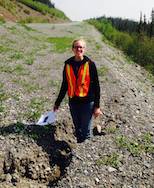
After having completed her bachelor's degree in civil engineering in May 2014, Laurie-Anne began a master's in cold region engineering. The topic of her master's thesis is the analysis of longitudinal profiles to characterize the permafrost degradation underneath the existing road on the Alaska Highway in Yukon. The project's results will serve to localize thaw-sensitive areas, to diagnose the causes of permafrost degradation and select the best mitigation stategies.
Caroline Richard - Master student
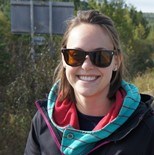
Caroline completed her bachelor's degree in Civil Engineering at Laval University in May 2014. Now, she is pursuing her graduate studies in the Arkuluq program. The topic of her marster's thesis is the development of a thermal stabilization method of a road built on thaw-sensitive permafrost using high albedo surfaces. Her main field site was installed in the summer 2015 at Salluit in Nunavik and the data collected will serve to validate the model developed.
Florence Lanouette - Master student
Coming soon
Mathieu Durand-Jézéquel - Master Student
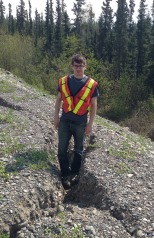
Mathieu having completed his bachelor's degree in civil engineering at Laval University in 2014. He has begun his master's project which aims to characterize the mechanical behavior of marginally frozen soils in a road context.
Graduate students
Simon Dumais - Master student graduate
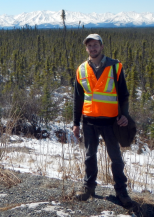
After having obtained his Bachelor’s degree in Civil Engineering at Laval University in May 2013, Simon has completing his Master in the same field. His project within ARQULUK dealed with the use of high albedo surfaces in order to reduce heath absorption by road surface. Besides a laboratory program, this project consisted of several test boards including in Yukon, SÉRUL and northern Quebec.
Cédric Flécheux - Master student graduate

Within the context of an exchange program between his engineering school (Arts et Métiers Paristech) and Laval University, Cédric Flécheux began his master in January 2012 and finished it in September 2014. His knowledge with respect to mechanical and industrial engineering allowed him to develop a prototype tool designed for the in-situ characterization of permafrost.
Related projects
Vincent Lamontagne : Master Student

Vincent is a graduate student of Laval University in geological engineering and he has begun a Master's degree in civil engineering in a project related to the Arquluk program. His master's project consists in monitoring the thermal behavior of the acces road between Salluit Airport and the village. This project allows documentind and evaluating the effectiveness of a heat drain set up at full scale in order to clarify the design criterias for infrastructure on thaw-sensitive permafrost.
Past students
Dejan Grabundzija
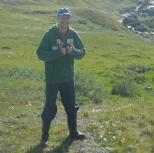
Dejan was involved in a project concentrating on mitigation techniques for permafrost thaw under a road in the village named Salluit. He started this project in the summer of 2012, when he was still a Bachelor’s student.
Département de génie civil - Pavillon Adrien-Pouliot - 1065, av. de la Médecine, Québec, Québec, G1V 0A6 - Canada
Téléphone: 1.418.656.2131 # 407138 - Fax: 1.418.656.2928 - chantal.lemieux@gci.ulaval.ca

 Print
Print